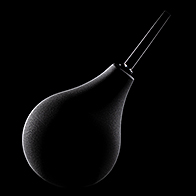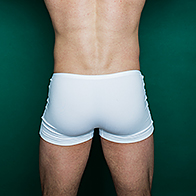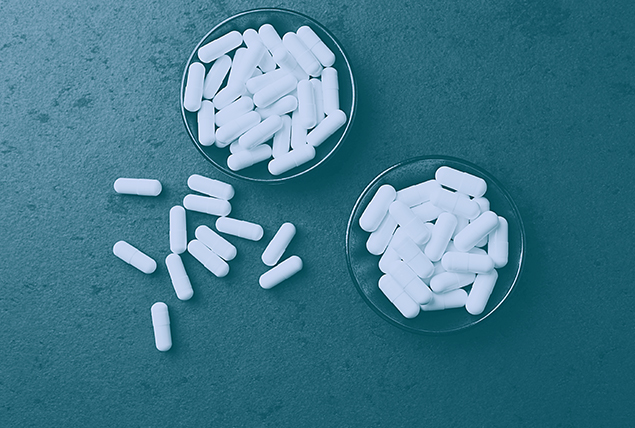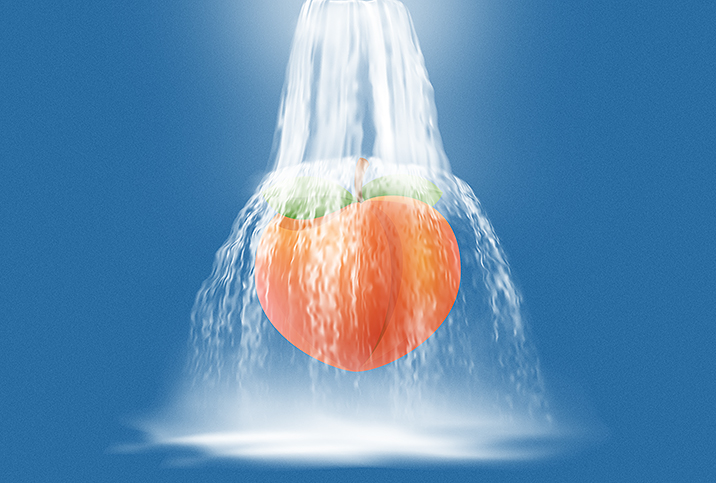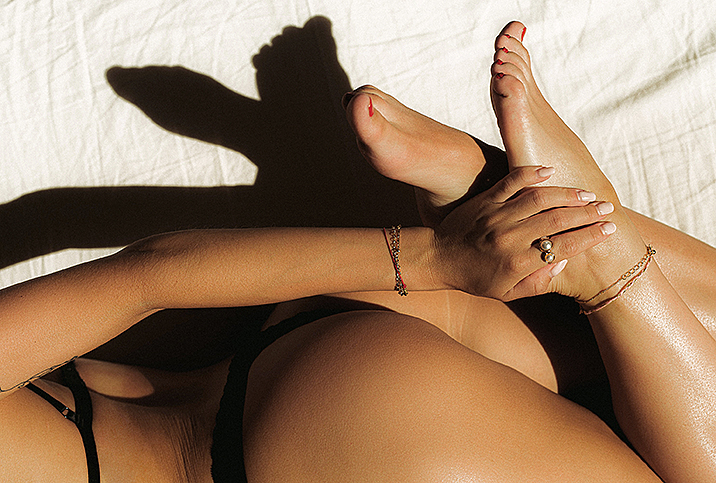Some Like It Bleached

Anal bleaching is a beauty treatment designed to lighten the skin around the anus to help make people feel more confident about the appearance of their backsides.
Though the darker color of your butthole is completely normal, this treatment is popular among people who want a different aesthetic between their cheeks and is used to make the color of your anus more uniform with the surrounding skin. Bleaching was first popularized by porn actors and then moved into the mainstream as anal sex became more common and openly discussed.
Of course, you may have questions about the safety and hazards involved, so we decided to dive into the ins and outs of keeping your beautiful butthole healthy.
In the eye of the beholder
Certainly, your butthole deserves the same TLC you give to the rest of your body, and you may want your derriere to look a certain way when you're under the sheets and between the cheeks. Its appearance may fill you with confidence, and that's important when you're getting naked with someone.
For many people, though, anal bleaching stems from a certain beauty standard that suggests a non-bleached hole is bad.
"We are taught from a young age to be ashamed of our bodies as they are," said Tuck Malloy, a sex and relationships educator and expert in Oakland, California. "Many porn performers have bleached a--holes, and I often see folks comparing themselves to the bodies they see in porn.
"It is very common for folks to be nervous that they won't be attractive to their partners if their body doesn't look a very specific way," they added.
However, Malloy also acknowledged that it's possible to hold at the same time both a level of respect for people being able to do what they want with their bodies and a critical view of beauty modification practices that are done to assuage shame of our bodies.
They don't really use bleach
In fact, no bleach is involved in the process of anal bleaching. Instead, lightening agents such as kojic acid, azelaic acid, niacinamide, malic acid, lactic acid or Emblica extract are used.
When you attend an anal bleaching appointment, the technician usually waxes the anal area and then applies the appropriate product, either a chemical peel or a cream, to the perianal skin around your anus to break down the melanin in the skin. The whole procedure lasts only 20 to 30 minutes, but it may take longer depending on your skin color.
"Each client will be prescribed a cream to utilize before, during and two weeks after their two in-office treatments," explained New York City-based anal surgeon Evan Goldstein, D.O., founder and CEO of Bespoke Surgical. "This further improves the results from the peel administered by our medical staff.
"Each in-office session is 30 minutes long, during which we apply the medical grade peel. Clients will actually go home with the peel still on and are instructed to wash it off after nine to 10 hours," he added.
Seek a professional
Done right—with a skilled provider and the right products—anal bleaching is relatively safe. It is often considered to be similar to a chemical peel or facial, which are very common. However, as with any procedure, there are risks involved in anal bleaching.
"I think most people hear the word 'bleach' and they get scared," noted Goldstein, whose practice uses the term "pigment lightening" and formulas that are safe and effective.
"However, there are plenty of products out there that aren't safe to use, and when those products get in the wrong hands, of course, the results can be problematic," Goldstein advised.
Anal bleaching has nothing to do with the kind of bleach used to clean your bathroom or lighten your hair—the active ingredients are very different. However, some products, especially if bought overseas or purchased online from unverifiable sources, may not have approval from the Food and Drug Administration and can contain hydroquinone as the key lightening ingredient. Hydroquinone, which in high concentrations can cause hyperpigmentation, and cancer in more severe cases, has been banned in the United States since 2020 under the CARES Act.
If you decide to go DIY—perhaps as a more cost-effective alternative to expensive spa treatments—make sure you do online research and read reviews carefully to find a reliable product that will help rather than harm your precious butthole.
Goldstein warned that at-home products often don't contain high enough concentrations of lightening ingredients to be effective, since effective levels require a prescription, or they haven't been tested for safety to use in the intimate region.
In short, getting anal bleaching done by a professional is highly recommended.
"In a similar way to someone bleaching their hair at home compared to having it done professionally at a salon, the effects of anal bleaching can vary widely," Goldstein explained. "Plus, with a professional service, there is aftercare involved that you can take advantage of should any issues arise."
Post-bleaching care
After anal bleaching treatment, people should avoid waxing or laser hair removal for at least two weeks, as well as anal sex for five to seven days, because the peel used in the process can temporarily make the skin more sensitive, Goldstein said. Friction and excessive heat should also be avoided for at least eight hours, along with any exfoliation or products that may cause irritation.
It's important to respect how someone wants to take care of their bodies and not to judge their appearance.
"A--holes are gorgeous on their own without any bleaching, waxing or any changes at all," Malloy declared. "But everyone is on their own butthole journey."






